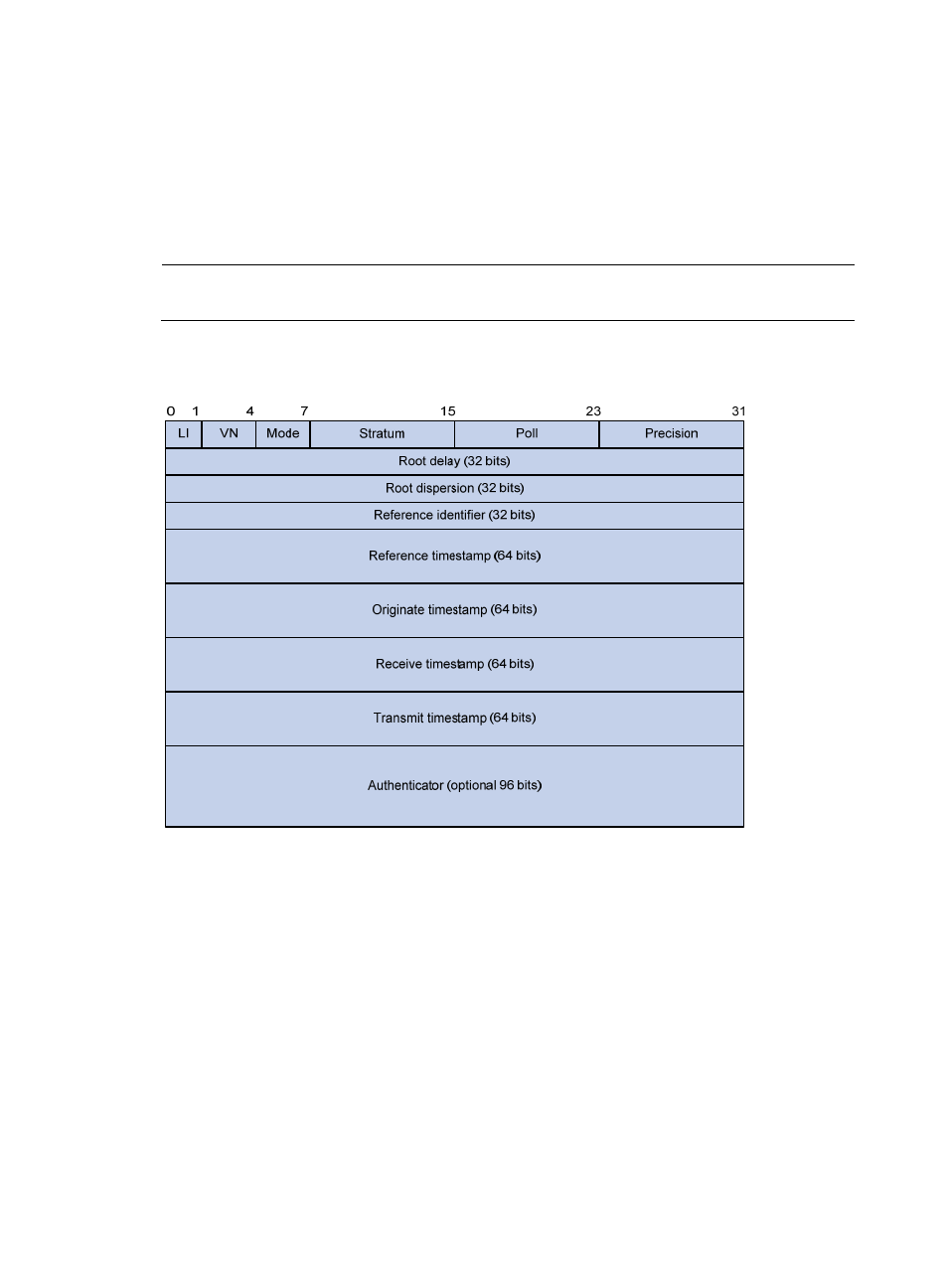Ntp message format – H3C Technologies H3C SecBlade NetStream Cards User Manual
Page 207

192
This is only a rough description of the work mechanism of NTP. For more information, see RFC 1305.
NTP message format
NTP uses two types of messages, clock synchronization message and NTP control message. An NTP
control message is used in environments where network management is needed. Because it is not a must
for clock synchronization, it is not described in this document.
NOTE:
All NTP messages mentioned in this document refer to NTP clock synchronization messages.
A clock synchronization message is encapsulated in a UDP message, in the format shown in
.
Figure 56 Clock synchronization message format
Main fields are described as follows:
•
LI (Leap Indicator): A 2-bit leap indicator. When set to 11, it warns of an alarm condition (clock
unsynchronized); when set to any other value, it is not to be processed by NTP.
•
VN (Version Number): A 3-bit version number that indicates the version of NTP. The latest version
is version 3.
•
Mode: A 3-bit code that indicates the work mode of NTP. This field can be set to these values: 0 –
reserved; 1 – symmetric active; 2 – symmetric passive; 3 – client; 4 – server; 5 – broadcast or
multicast; 6 – NTP control message; 7 – reserved for private use.
•
Stratum: An 8-bit integer that indicates the stratum level of the local clock, with the value ranging
from 1 to 16. The clock precision decreases from stratum 1 through stratum 16. A stratum 1 clock has
the highest precision, and a stratum 16 clock is not synchronized and cannot be used as a reference
clock.
•
Poll: An 8-bit signed integer that indicates the poll interval, namely the maximum interval between
successive messages.